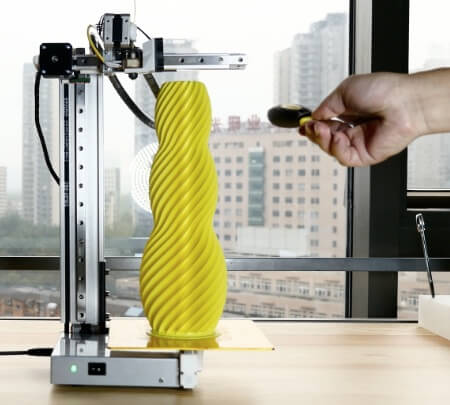


Finally, your model is filed and sanded to get rid of the sprues. Save to Dropbox If you’re logged into Dropbox, you can save directly to Dropbox. Once the metal has cooled and solidified, the plaster mold is broken and the metal models are removed by hand. Print Settings Printer: Cetus 3D Rafts: Doesnt Matter Supports: Yes More from 3D Printer Accessories Downloading Files. Put a piece of paper in between the nozzle and the platform. Use the + button to lower the print head to close proximity of platform. Then, the molten metal is poured in to fill the cavities left by the wax. Press button 5 to move print head to the middle of the build platform. The plaster mold is then put in an oven and heated for several hours to a point where the wax is completely burned out.

If you use a single brand you could setup profiles for each. When the plaster solidifies, it forms the mold for casting the metal. Ideally you would do most of these steps for every print or every individual roll of filament. Click to find the best Results for cetus 3d Models for your 3D Printer. The tree is then placed in a flask and covered in a fine plaster. Every Day new 3D Models from all over the World. Next, it will be attached with the sprue to a wax ‘tree’, together with a bunch of other models. After support structures are removed and your model is cleaned, the model can be prepared for casting.įirst, one or more wax sprues will be attached to your model. Vase Mode or also called Spiralize Outer Contour in Cura is a handy feature that allows you to print aesthetic and seamless 3D prints while also using less filament. These support structures are automatically generated and manually removed after the printing process. Support structures are printed along with the model to make sure your model doesn’t fall apart. In general, 3D printing technologies can be split up into 2 groups: direct and indirect 3D printing. The wax printing process is a type of stereolithography that uses a wax-like resin. Here are some screenshots of how you should cofigure Repetier Host to work properly with your Cetus: Connection: If you have issues when communicating with the printer, you can try lowering the baud rate. Attach the 60mm blower fan to the duct and use the screws that were included with it.Wax 3D printing and lost wax casting are used to build your design when using this material. To configure Repetier for your printer, go to Config->Printer Settings.Screw in all three m3 screws to secure the cooling duct.

(you do not need to remove the nozzle for this) Slide the new cooling duct as shown in the above images.(make sure to give yourself some length to work with on the wires) Either attach a new jst connector to the 60mm blower fan or use the one from the 40mm fan using the scotchlok connectors.Remove the existing 40mm fan and cooling duct and clean up as needed.In order to achieve stable Wi-Fi connection, It is highly recommended to use the printer under a capacious Wi-Fi environment. The computer and the printers must connect to the same WLAN (same SSID) before they can communicate. Keep the power adapter away from water and high temperature environments. Setting Up Wi-Fi Connecting to Cetus through Wi-Fi requires a Wireless Local Area Network (WLAN). From what i've found this works for all nozzles included with the Cetus3d printer and should only direct air where its needed.Ģ scotchlok connectors to connect blower fan Cetus 3D printer only works with the power adapter provided by the original manufacturer, otherwise the machine could become damaged or even cause a fire hazard. If these options are not available, please refer to the Installing PrusaSlicer tab located above in this machine tutorial. This is a cooling duct made for a Cetus3d printer that aims to improve cooling for both the areas before the hot zone and the part area below the nozzle.


 0 kommentar(er)
0 kommentar(er)
